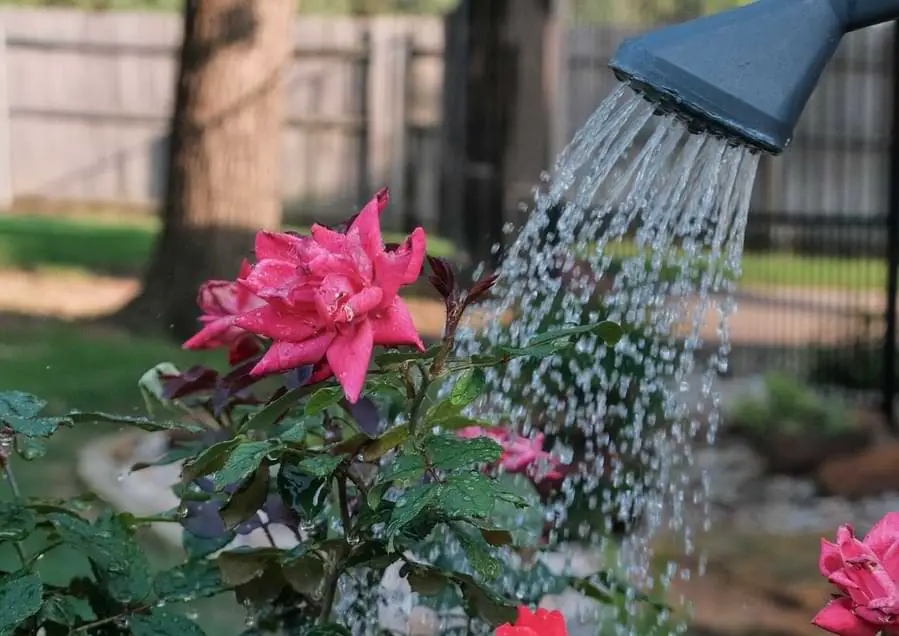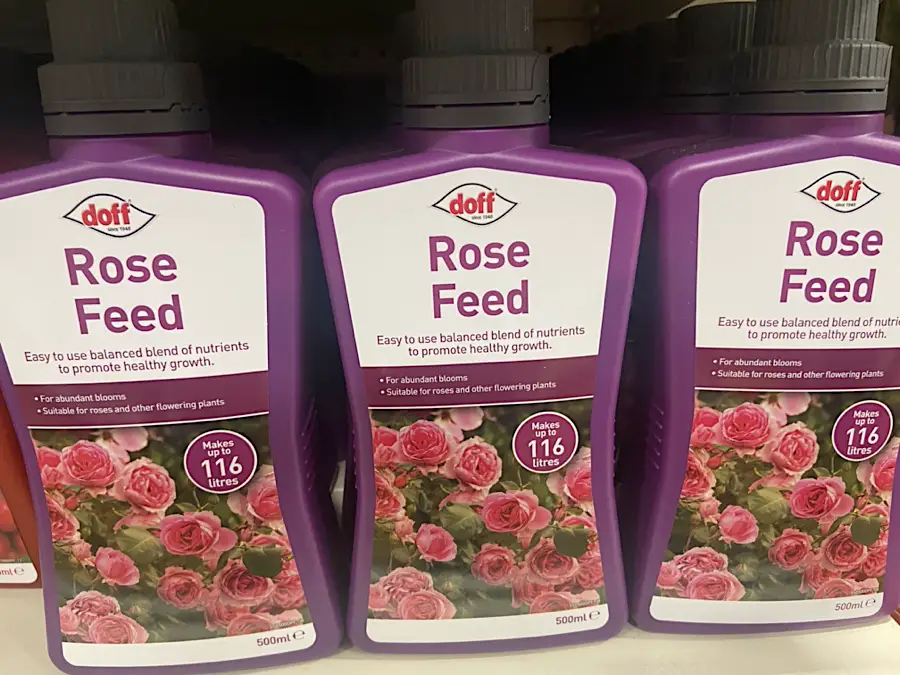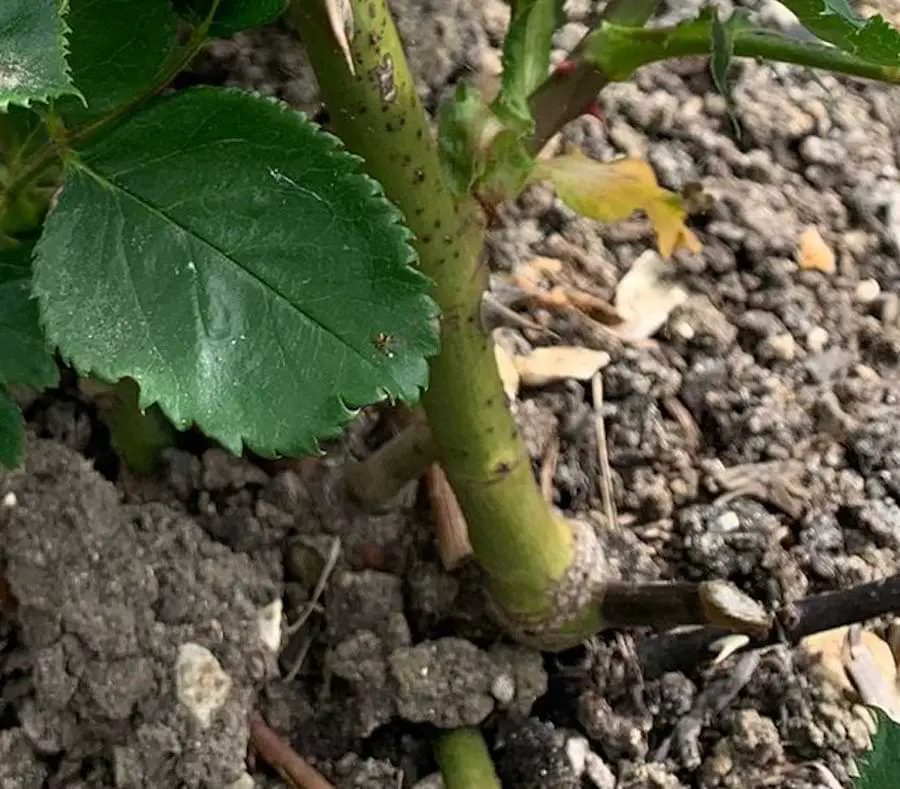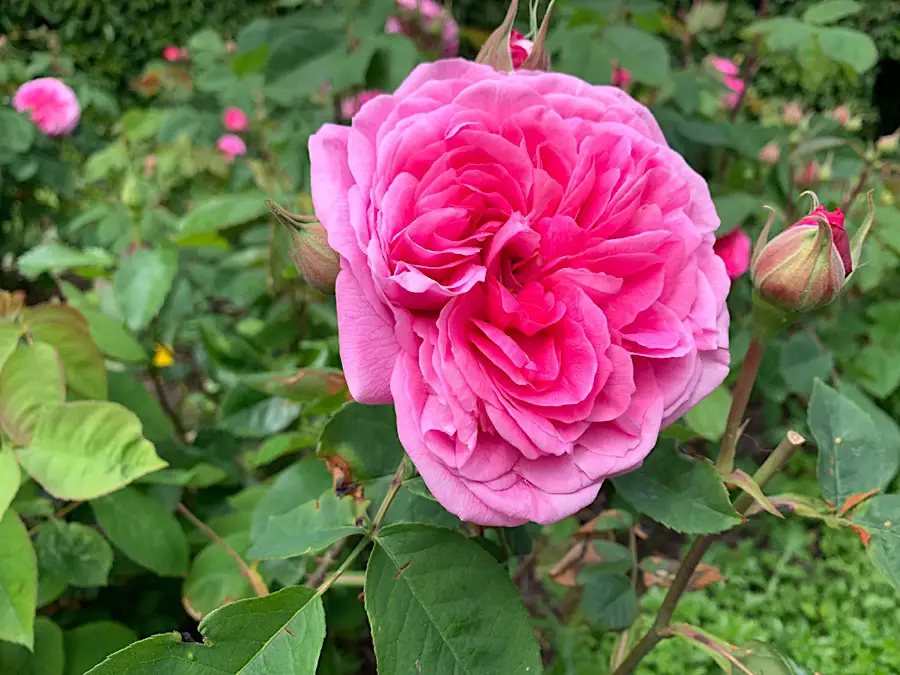I’m sorry to hear that your knockout roses look terrible. There could be several reasons why they might be struggling.
It helps to understand a little more about why they look terrible, but in the absence of further information, here are some common issues that can affect knockout® roses.
Here’s a brief overview of the kind of issues that could be making your knockout roses look bad.
Knockout® roses can look terrible if they are affected by water issues, pests and diseases, environmental changes, and soil and/or nutrient deficiencies. Further complications include improper care, incorrect location or planting depth, or graft union issues. Most of which can be remedied.
My knockout roses look terrible! Knockout rose issues
That’s the quick list, so at least now we understand the broad scope of reasons why your knockout roses look terrible. Let’s head into more detail around each of these to get your roses looking their best and thriving for their entire life span!

Pest or disease infestation
Roses are susceptible to various pests and diseases, such as aphids, spider mites, powdery mildew, and black spot.
Check the leaves and stems for any signs of infestations or discoloration.
Look around the roses and stems for common signs of rose pests. These pests can cause leaf damage, discoloration, and distortion. Look up each type so you can understand what to look out for.
Check the undersides of leaves, petals, and around stems for signs of these pests.
Similarly, diseases like powdery mildew and black spot can cause fungal infections, leading to spotted and discolored leaves.
If you notice any signs of pests or diseases, consider using appropriate organic or chemical treatments to control them.
Watering issues
Overwatering or underwatering can lead to problems.
If the soil is constantly soggy, the roots may suffocate and rot, while underwatering can lead to stress and wilting.
Overwatering can lead to root rot and other fungal diseases, causing the plant to wilt, develop yellow leaves, and eventually die.
On the other hand, underwatering can stress the plant, leading to wilting, drooping leaves, and reduced growth.
To ensure proper watering, stick your finger about an inch into the soil; if it feels dry, it’s time to water. Make sure the rose bed has good drainage to prevent waterlogged roots.
Read more about when to water roses here. And my other article focussed on watering roses in hot weather!

Soil conditions
Knockout® roses prefer well-draining soil that is rich in organic matter. If the soil is compacted or lacks nutrients, it can hinder the plant’s growth.
Roses prefer well-draining soil with a pH level between 6.0 and 6.5. Heavy clay soils may not drain well, causing root suffocation, while sandy soils can dry out too quickly.
Where you think it is needed, amend the soil with compost or well-rotted manure to improve its structure and fertility.
Doing a soil test can help you identify any nutrient deficiencies and adjust the soil accordingly.
Read more about this in my article about the best type of soil for roses!
Nutrient deficiency
Knockout rose issues can occur due to a lack of essential nutrients, This can cause yellowing leaves, poor growth, and overall weakness in the plant.
Common nutrient deficiencies in knockout® roses include nitrogen, phosphorus, and potassium. Nitrogen deficiency leads to yellowing leaves and stunted growth, while phosphorus deficiency results in poor flower production.
Potassium deficiency can cause weak stems and increased susceptibility to diseases.
Fertilize your knockout® roses regularly with a balanced fertilizer or one specifically formulated with the NPK ratio for roses to ensure they receive the necessary nutrients.

Improper pruning
Incorrect or insufficient pruning could be the reason your knockout® roses look terrible.
Pruning is important for rose health, but if done incorrectly, it can lead to stress and reduced flowering.
Pruning is essential to maintain the shape and health of knockout® roses. However, improper pruning, like cutting too much or at the wrong time, can stress the plant.
Always use clean and sharp pruning shears, and prune in late winter or early spring before new growth begins. Remove dead or diseased wood, thin out crowded branches, and shape the plant for good air circulation.
Environmental stress
Extreme temperatures, excessive heat, or cold can put stress on the plants and affect their growth.
Extreme temperatures, whether hot or cold, can stress knockout® roses. If temperatures consistently reach above 90°F (32°C), roses may wilt and struggle to flower.
On the other hand, freezing temperatures can damage the plant …especially if it’s not cold-hardy. Consider providing shade during hot days and covering the plant during frosty nights.
If you live in a particularly cold zone, then consider these roses instead.
Planting location
One potential (and often fundamental) reason your knockout® roses look terrible is simply down to the location.
Knockout roses need plenty of sunlight to thrive. If they are planted in a spot with insufficient sunlight, it can hinder their growth and flowering.
Also, Knockout® roses require at least six hours of direct sunlight daily to thrive and produce abundant blooms. If they are planted in a shady area, they may become leggy and fail to flower. Transplant them to a sunnier spot if needed and look out for blind shoots.
To identify the specific knockout rose issues you’re experiencing, you should closely examine the plants and their environment.
Check for signs of pests, diseases, or any abnormalities in the leaves, stems, and flowers. Ensure they receive adequate water and sunlight, and that the soil is in good condition.

What if none of these options work?
Of course, it can be frustrating if your knockout roses look terrible and are still not thriving – despite addressing the potential issues mentioned above.
In such cases, consider the following additional steps:
Soil test

Conduct a soil test to determine if there are any specific nutrient deficiencies or imbalances.
A soil test will provide precise information on the soil’s pH and nutrient levels. Based on the results, you can adjust the soil amendments and fertilizers accordingly.
Root inspection
Carefully inspect the roots of your knockout® roses. Healthy roots are firm and white. If you notice mushy, discolored, or decaying roots, it might indicate root rot or other root-related issues.
In such cases, you may need to carefully dig up the plant, trim the damaged roots, and replant it in well-draining soil.
Graft union check
If your knockout® rose is a grafted variety (common for many roses), check the graft union, which is the area where the rose is grafted onto the rootstock.
Make sure there are no signs of growth emerging from below the graft union.
If there is growth from the rootstock, it means the grafted portion has died off, and the rootstock rose is taking over. If this is the case, the plant won’t display the desired characteristics of the knockout rose variety, and you might need to replace it.

Chemical residue
Another knockout rose issue is chemicals. If you’ve recently used chemicals or herbicides near your roses, residual chemicals might be affecting their health.
Make sure you avoid using any harmful chemicals near the plants. And also, consider flushing the soil with water to help remove any potential residues.
Inadequate planting depth
Check if your knockout® roses were planted at the right depth.
If they were planted too deeply, it can cause stress on the plant and affect its growth. The graft union should be above the soil level.
Virus or pathogen
Sometimes, viruses or pathogens can infect roses, causing a decline in health.
Unfortunately, viral infections have no cure, and if that’s the case, you may need to remove and destroy the affected plants to prevent the spread to other roses.
Environmental factors
Consider any changes in the environment that might have impacted the roses.
For example, nearby construction, changes in water sources, or other factors potentially affecting their health.

Knockout roses look terrible ~ More roses help 🌹
If none of these steps seem to resolve the issue, you could take the further step of consulting with a local horticulturist or professional rose specialist. They can often even visit your garden.
They can examine your knockout roses firsthand, and provide personalized advice based on the specific conditions in your area.
They may be able to identify issues that were overlooked. From that, they can offer additional recommendations or solutions to improve the health of your knockout® roses.
By addressing these potential issues, you can improve the health and appearance of your knockout® roses.
Regular observation, proper care, and timely intervention can help your knockout® roses recover and flourish once again.
Remember that knockout® roses are generally hardy plants. With the right care, they can rebound from many problems.

Hi, I’m Michael. My passion for roses was sparked a few years ago after visiting a dedicated community rose garden. So Rosehow.com represents my take, my learnings, and my help for anyone looking to grow, be proud of, and harvest roses.

